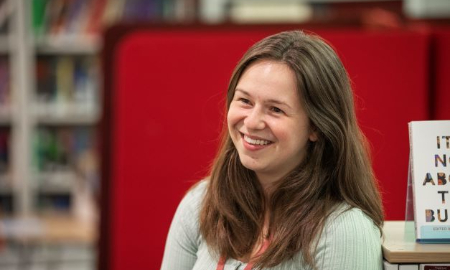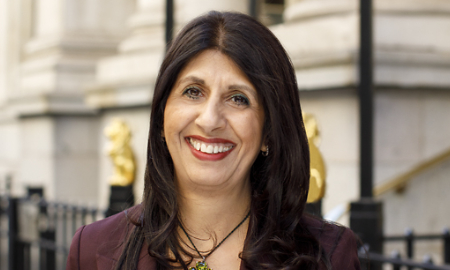Sign up for our free daily newsletter
YOUR PRIVACY - PLEASE READ CAREFULLY DATA PROTECTION STATEMENT
Below we explain how we will communicate with you. We set out how we use your data in our Privacy Policy.
Global City Media, and its associated brands will use the lawful basis of legitimate interests to use
the
contact details you have supplied to contact you regarding our publications, events, training,
reader
research, and other relevant information. We will always give you the option to opt out of our
marketing.
By clicking submit, you confirm that you understand and accept the Terms & Conditions and Privacy Policy
It will take more than 125 years for the judiciary in England and Wales to reflect the proportion of women, Black and Asian people in the wider population at the current rate of progress, according to analysis from the Law Society.
With the proportion of Black judges barely growing over the past eight years from 1.02% to 1.09%, the society found it will take until 2149 for their representation to match current estimates for the general population (3.5%).
Although the proportion of women judges and those of Asian ethnicity is increasing more quickly, the report found they are also ‘being held back by the glacial progress of diversity on the bench.’
Women now make up 35.3% of judges, up from 24.5% in 2014, though at the current rate of change it will still take a decade until they achieve equal representation.
Meantime the proportion of judges of Asian ethnicity has grown from 2.5% in 2014 to 4.8%, meaning that it will take until 2033 for them to achieve representation that matches the general population (8%).
Lubna Shuja, who earlier this month became the Law Society’s first British Asian and first Muslim president, said the findings were unacceptable.
“We need a judiciary that truly reflects our diverse society. We must take action and make real, lasting change so our judges can represent the people who come before them in court,” she said.
Representation of Black, women and Asian judges was also found to be uneven throughout the judiciary, with all three groups better represented as district judges than in more senior roles.
Black members of the judiciary are proportionally highest as district judges in the county court, where they make up 1.5% of the total. There are no Black judges sitting in the High Court or Court of Appeal, and there has never been a Supreme Court justice of colour.
Meantime, women make up 44% of district judges, falling to 31.5% in the High Court and 27% in the Court of Appeal. Following the recent retirements of Lady Jill Black, Lady Mary Arden and Lady Brenda Hale only one of the 12 present Supreme Court justices – Lady Rose of Colmworth – is a woman.
Asian judges are best represented as district judges in the magistrates’ court, where they make up 11.6% of the total, followed by the county court (6.8%). The figure dips to just below 3% at the High Court and the Court of Appeal.
“We know that progress does not happen overnight, however, we cannot wait over 120 years for women, Asian and Black judges to be fully representative on our court benches,” Shuja said. “We owe it to the public – who often use the judicial system at times of great stress – to at least have judges who represent and can relate to them.”
There is still time to enter the Women and Diversity in Law Awards, which is hosted by The Global Legal Post. The deadline for submissions is 11 November. Click here for more details
The analysis follows a report published last week by the University of Manchester in which more than half of the nearly 400 legal professionals surveyed said that they had witnessed a judge behaving in a racially biased way towards a defendant.
The report also quoted UK Government findings that the conversion rate from application to judicial appointment for Asian and Black candidates was estimated to be 37% and 75% lower respectively than for successful white candidates.
In the summer, the Law Society called for the abolition of statutory consultation – the process where the Judicial Appointments Commission consults with sitting judges about new appointments – on the grounds that it lacked transparency and could disadvantage judicial applicants from less traditional backgrounds, including those from ethnic minorities, who are less known to the judiciary.
Shuja also called on the UK Government to “address the structural barriers that are holding back talented candidates".
In January, the government launched a £1m campaign to recruit 4,000 new magistrates from diverse backgrounds and in April the Law Society Gazette reported that the campaign had attracted more than 34,000 expressions of interest, a quarter of which were from Black, Asian or minority ethnic individuals.
Other measures introduced by the government to improve diversity in the judiciary include outreach and support programmes for applicants from underrepresented backgrounds, a review of the eligibility criteria for appointment to remove barriers and a revised part-time working policy.
However, its five-year Judicial Diversity and Inclusion Strategy, launched in 2020, was criticised by the authors of the Manchester University report for making ‘no reference to racial bias or racism.’
‘The Strategy states that judicial appointments are made on merit following a fair and open competition from the widest range of eligible candidates. This is in denial about exclusionary structures and attitudes that shape decision-making,’ the report said.
In the run up to the Women and Diversity in Law Awards, The Global Legal Post has been publishing judges' reflections on their careers and how best to promote DE&I in the legal profession. Click on the links below to find out more:
'Who are you with the most unpronounceable name?' Zepz's GC on her life and career in a changing profession
‘Take every opportunity as if this is your breakthrough moment’: a barrister’s journey from Tower Hamlets via the Magic Circle
'I was trying to over-compensate for being different': Baker McKenzie's global marketing director on the importance of inclusion
‘Tiny changes can have a massive butterfly effect’: Clifford Chance's UK inclusion head on her D&I story
‘Everyone’s been excluded': Accenture Legal's global diversity head on the power of empathy
Email your news and story ideas to: [email protected]











